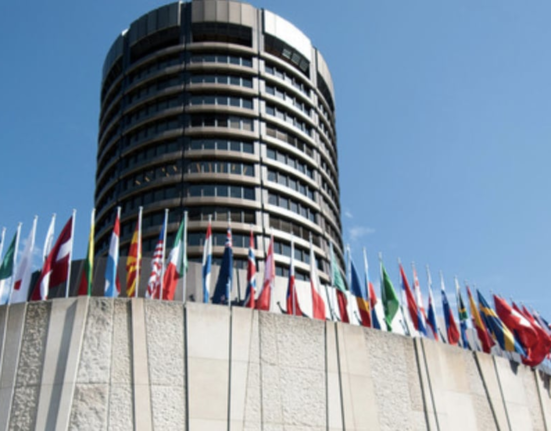Amid developments signaling the possibility of a widespread financial collapse and signs that major banks are preparing for it as they did in the 2008 recession, a top expert at American credit rating agency Fitch Ratings has highlighted why the banking sector in the United States is at risk.
As it happens, Christopher Wolfe, managing director and head of North American banks at Fitch Ratings, discussed the current state of the US banking sector in an interview with finance and technology reporter and host David Lin streamed on May 24.

Table of Contents
Challenges before banks
Indeed, Fitch Ratings last year downgraded the US sovereign credit rating, indirectly affecting finance institutions but not causing immediate negative actions, and Wolfe explained that banks are currently facing challenges due to interest rate environment changes and the aftermath of the Covid pandemic.
“Largely it has been playing out as we thought. We assumed that the rates were going to be higher for longer, and they have been. The prospects of rate cuts in 2024 continue to diminish. It doesn’t mean they can’t happen, but the likelihood has been marked down, at least in the markets.”
Additionally, he stressed that “banks have to contend with what will be a ‘higher for longer’ environment, and that has had some implications, but, so far, we haven’t been surprised by what we’ve seen,” adding the housing market stability differs from 2007, with less banking sector exposure to mortgage origination.

The banking industry faces a complex web of challenges that threaten its traditional model. Here’s a closer look at the key hurdles:
Economic Tightropes:
- Rising Interest Rates: A double-edged sword. While banks can potentially earn more on loans, it can also lead to fewer borrowers and higher defaults if the economy weakens.
- Market Volatility: Stock market fluctuations and economic uncertainty can hurt banks’ investment portfolios and overall financial health.
Technological Tsunami:
- Fintech Disruption: Nimble fintech startups offer competitive rates, lower fees, and friendly digital experiences, luring away customers.
- Cybersecurity Threats: As banks rely more on digital systems, they become prime targets for cyberattacks, risking financial losses and reputational damage.
Regulatory Labyrinth:
- Compliance Costs: Stringent regulations to protect consumers and prevent crises add significant burdens to operational costs.
- Innovation Hurdles: Complex regulations can stifle banks’ ability to adopt new technologies and adapt to changing market demands.
Shifting Sands of Consumer Behavior:
- Digital Demands: Customers expect seamless online and mobile banking experiences, pressuring banks to invest in user-friendly digital solutions.
- Sustainability Concerns: Growing pressure exists on banks to move away from financing environmentally unsustainable activities, requiring adjustments in lending practices and investment strategies.
Navigating the Future:
These challenges demand a proactive approach from US banks. Here are some potential strategies:
- Embrace Digital Transformation: Invest in innovative technologies to offer competitive digital services and improve efficiency.
- Focus on Customer Experience: Develop user-friendly digital platforms and cater to evolving customer needs.
- Manage Risk Effectively: Implement strategies to manage interest rate fluctuations and maintain strong capital reserves.
- Prioritize Cybersecurity: Invest in robust cybersecurity measures to protect customer data and financial systems.
- Collaborate with Fintech: View fintech companies as potential partners to enhance services and stay competitive.
Large vs. small banks
In terms of the difference between large and small banks, Wolfe has argued that the larger institutions have generally maintained stable liquidity, while smaller banks might be facing tighter liquidity conditions, impacting their funding costs, but that they “wouldn’t be systemic like SVB, Signature or First Republic.”
On top of that, he pointed out that commercial real estate, especially office spaces, faced challenges like valuation declines and refinancing problems, which could have negative implications for financial organizations, albeit more for smaller ones as opposed to larger ones.
Finally, Wolfe considered recession possibility, expecting banks to withstand short, mild pullbacks, though adverse shocks like unemployment spikes, credit card delinquency rates, geopolitical events, or real estate failures could present risks depending on the particular institutions’ sensitivity to such scenarios.

Interestingly, finance experts and government agencies have noted that the 2008 collapse had highlighted hidden leverage in off-sheet assets at Wall Street banks, including JPMorgan (NYSE: JPM) and Wells Fargo, as the key driver of the crisis, having maintained leverage ratios between 16:1 and 22:1 from 2000 to 2007.
Meanwhile, Tiff Macklem, the Governor of the Bank of Canada, has warned that the financial system in this country was on the brink of a significant fallout, citing mounting concerns about housing affordability and a potential increase in capital gains tax rates, as Finbold reported on May 13.
Disclaimer ||
The Information provided on this website article does not constitute investment advice ,financial advice,trading advice,or any other sort of advice and you should not treat any of the website’s content as such.
Always do your own research! DYOR NFA
Coin Data Cap does not recommend that any cryptocurrency should be bought, sold or held by you, Do Conduct your own due diligence and consult your financial adviser before making any investment decisions!





Leave feedback about this